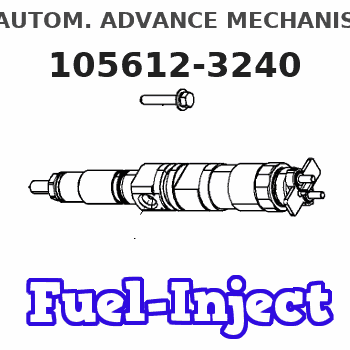Information autom. advance mechanism
BOSCH
9 420 615 779
9420615779
ZEXEL
105612-3240
1056123240
ISUZU
1157402250
1157402250

Rating:
Scheme ###:
| 1. | [1] | 156133-1320 | FLYWEIGHT ASSEMBLY |
| 2. | [2] | 156108-0900 | FLYWEIGHT |
| 3/1. | [0] | 029310-9010 | SHIM D19.6&9T0.5 |
| 3/1. | [0] | 029310-9020 | SHIM D19.6&9T1 |
| 3/1. | [0] | 029310-9030 | SHIM D19.6&9T0.1 |
| 3/1. | [0] | 029310-9040 | SHIM D19.6&9T0.2 |
| 3/1. | [0] | 029310-9050 | PLAIN WASHER D19.6&9T1.5 |
| 3/1. | [0] | 139409-0000 | SHIM D19.6&9.0T0.15 |
| 4. | [2] | 156124-7400 | COMPRESSION SPRING |
| 11. | [1] | 156130-8120 | FLANGE BUSHING |
| 12. | [1] | 029622-8010 | PACKING RING |
| 13. | [1] | 156117-0100 | O-RING |
| 14. | [1] | 156114-1300 | CASE |
| 15. | [1] | 156116-1020 | PACKING RING |
| 16. | [2] | 026508-1240 | GASKET D11.9&8.2T1 |
| 17. | [2] | 156115-0100 | CAPSULE |
| 18. | [1] | 014111-2420 | LOCKING WASHER |
| 19. | [1] | 131325-0200 | UNION NUT |
Cross reference number
Zexel num
Bosch num
Firm num
Name
105612-3240
1157402250 ISUZU
AUTOM. ADVANCE MECHANISM
K 14KC AUTOMATIC TIMER TIMER SA TIMER
K 14KC AUTOMATIC TIMER TIMER SA TIMER
105612-3240
1157402420 ISUZU
AUTOM. ADVANCE MECHANISM
A K 14KC AUTOMATIC TIMER TIMER SA TIMER
A K 14KC AUTOMATIC TIMER TIMER SA TIMER
Information:
Overheating1. Defective Temperature Gauge If the temperature gauge shows that the coolant temperature is above normal and all other conditions indicate that conditions are normal, check the coolant temperature in another method, such as: * Read the coolant temperature with an ECAP or DDT.* Install an 8T0470 Thermistor Thermometer Group* Install a temperature sensitive tape.* Install a new gauge that is known to be good.2. Low Coolant Level Low coolant level can cause overheating to occur. Low coolant level can be caused by leaks in the cooling system or by improper filling of the radiator. With the engine cool, the coolant level should be at the low end of the fill neck on the radiator. If the coolant is below this level, a visual inspection should be done to see if any leaks can be seen. If nothing obvious is seen, refer to the topic Loss Of Coolant in this section. Fill the radiator according to recommendations in the Operation & Maintenance Manual.3. Dirty Radiator Check for debris between the fins of the radiator core which could restrict the free flow of air through the radiator core. Also check for debris or deposits on the inside of the core which could restrict the free flow of coolant through the radiator. Clean out any debris that is found.4. Fan Belt Slippage Check for proper fan speed with the fan engaged. Check the belt tension. Check the belt tensioner bearing and spring for proper operation. Check the belt and pulleys for lubricant contaminants which could cause belt slippage. Check the belt for hardening and glaze caused by heat and slippage. Repair or replace any defective parts that are detected.5. Defective Hoses Check the hoses for leaks, cuts and loose clamps. Check for any hoses that are collapsed or restricted that could cause a decrease in the amount of flow of coolant through the engine or radiator. Replace as necessary.6. Defective Pressure Cap Inspect the sealing surface of the pressure cap and the radiator. Look for any damage to the seal or the sealing surface. Remove any foreign material and replace any defective seals. Check the sealing pressure of the cap with the Cooling System Pressurization Pump Group, 9S8140. This will check the opening pressure of the cap. If the cap is defective, replace it.7. Defective Water Temperature Regulator If the water temperature regulator is not opening properly or if the seal is damaged, it can cause the engine to overheat. Check the water temperature regulator for proper operation according to the test procedure for the thermostat located in the Testing and Adjusting section of Systems Operation, Testing and Adjusting, Form No. SENR4964.8. Defective Water Pump Check the water pump impeller for damage or looseness on the shaft. Also, see the topic, Cooling System, in the Testing and Adjusting section of Systems Operation, Testing and Adjusting, Form No. SENR4964.9. Air/Combustion Gas In The Cooling System Air/Combustion Gas in the cooling system reduces the heat transfer from hot engine parts to
